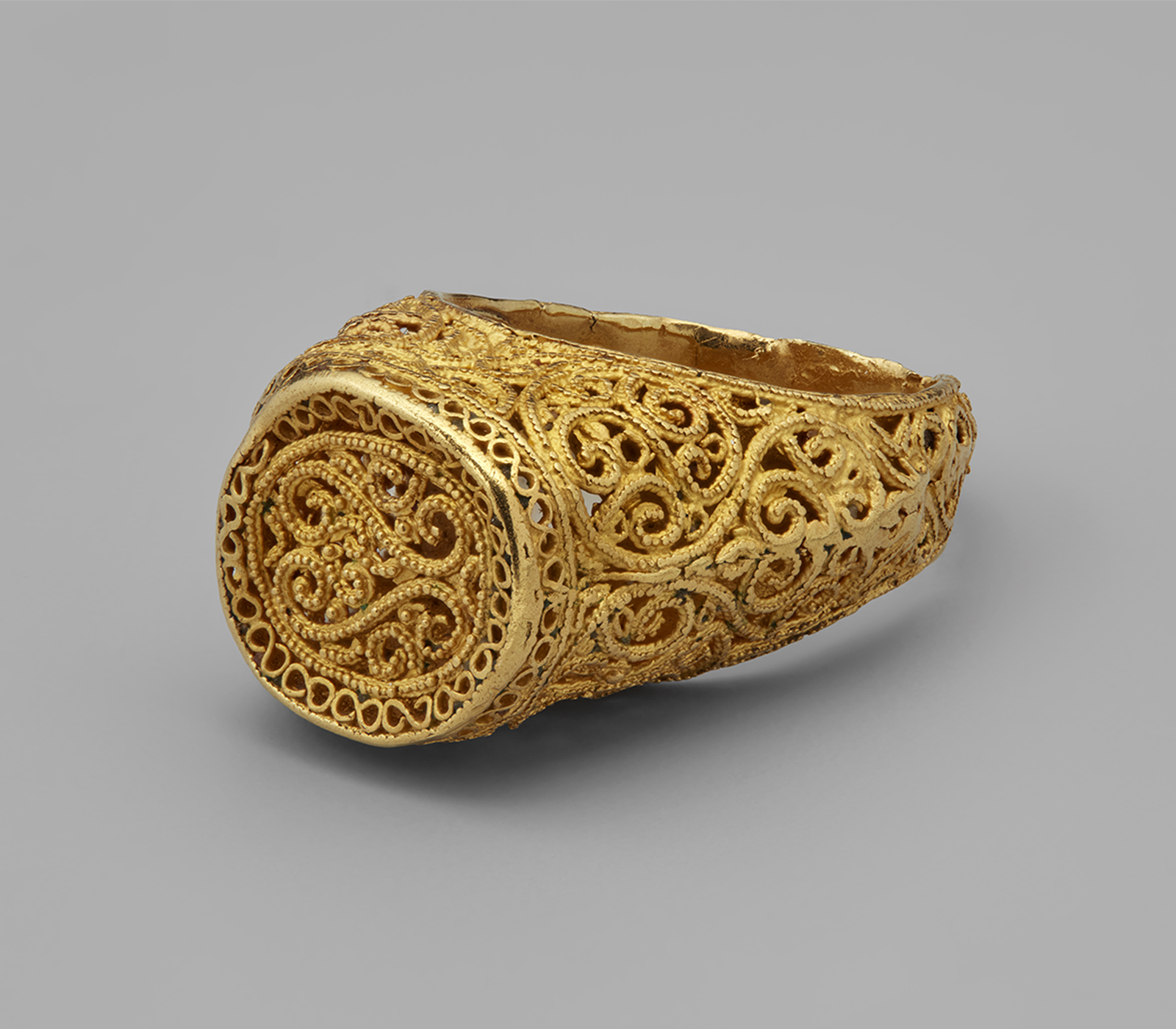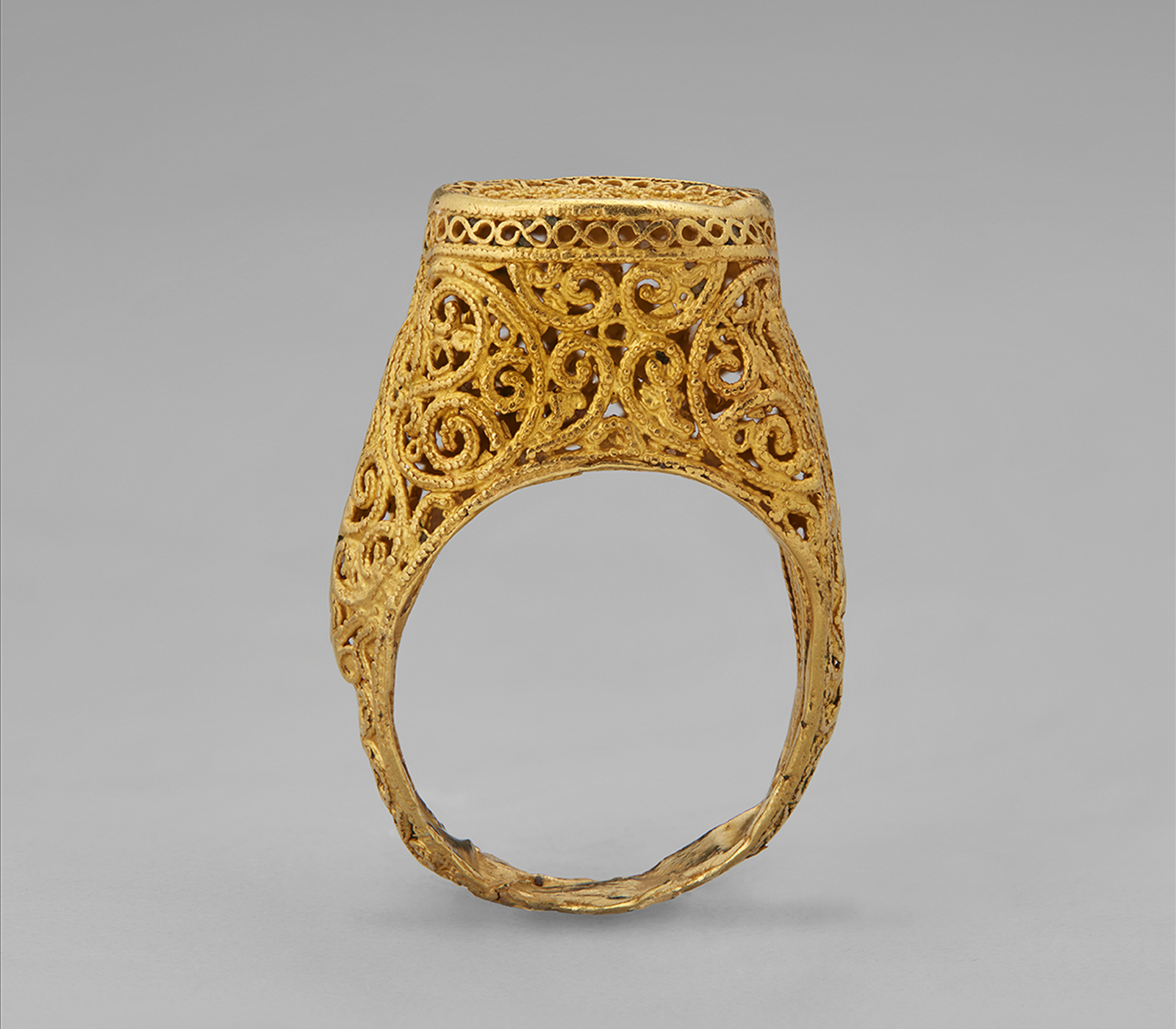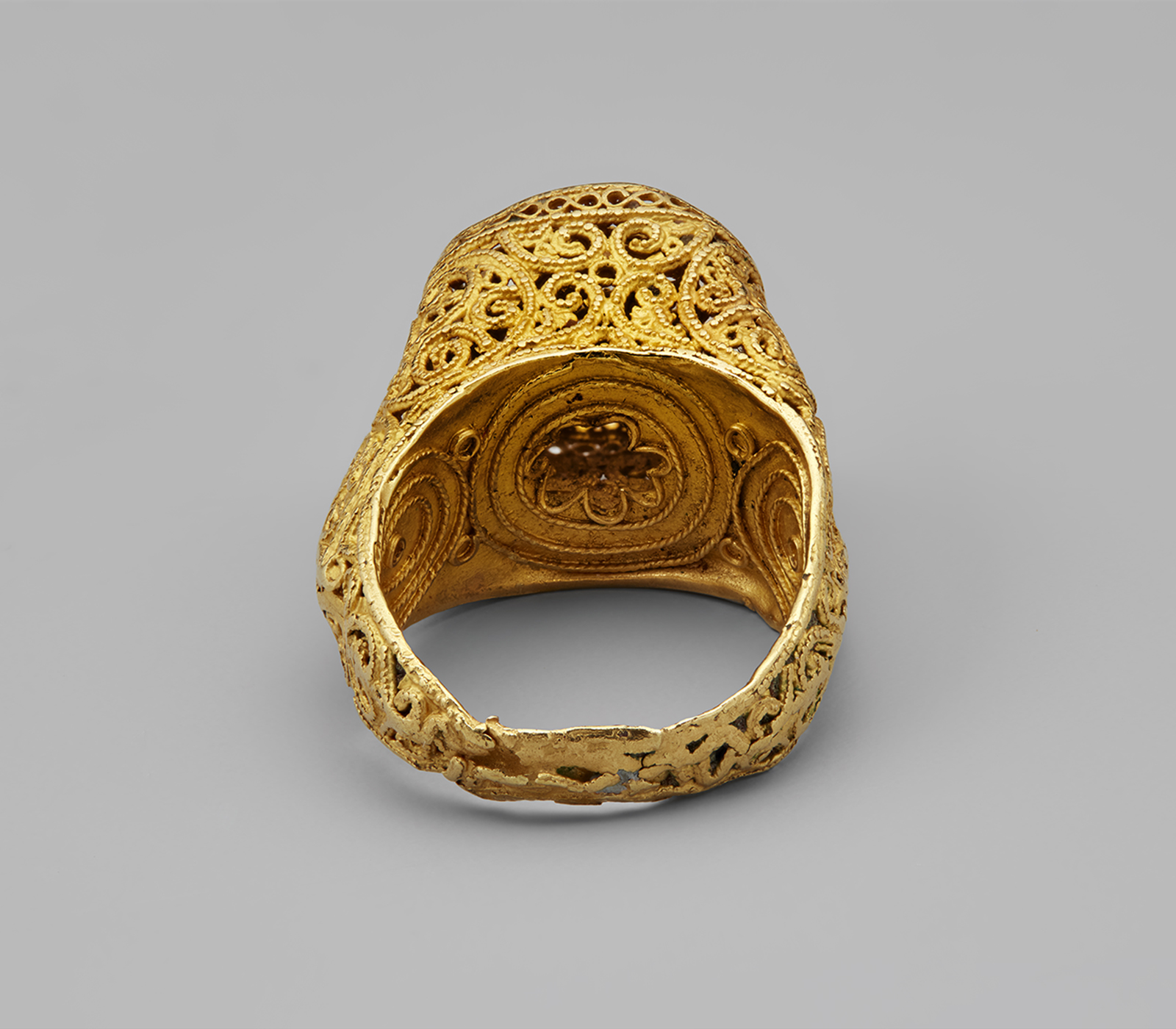Click on the image to zoom
Ring
- Accession Number:AKM595
- Place:Egypt
- Dimensions:2.5 cm
- Date:10th – 11th century
- Materials and Technique:Gold; filigree and granulation
Fabricated entirely in gold, this stirrup-shaped ring demonstrates two techniques typical of jewelry created during the Cairo-based Fatimid dynasty (909-1171): filigree and granulation. Filigree is created by intertwining metal threads in elaborate patterns. Granulation involves applying tiny grains or balls of gold to a surface, either to fill in a design or to create a pattern. As the use of granulation eventually waned during this period, the ring is likely an earlier example of Fatimid craftsmanship. Its gold could have been obtained from a number of sources, ranging from nearby mines in Nubia (modern-day Sudan) and the Kingdom of Ghana to older jewelry that had been melted down and repurposed. A handful of comparable rings do exist, including a number in the Khalili Collection, London and the al-Sabah Collection in Kuwait as well as some in the Harari Collection, now at the L.A. Memorial Mayer Institute for Islamic Art in Jerusalem.
Further Reading
The trove of medieval documents known as the Cairo Geniza provides a great deal of important information about jewelry production during the Fatimid period. Found in the Ben Ezra Synagogue in Fustat or Old Cairo, Egypt, these manuscript fragments indicate prices, terminology, and techniques used in the industry, which was largely staffed by Jewish craftsmen. Twelfth-century trousseau lists in the Geniza describe filigree as mushabbak (latticework).
The Fatimid territory stretched across North Africa, and at its maximum extent included areas as far east as the Levant and Hijaz. The Empire maintained important trade relations within Africa, as well as empires around the Indian Ocean and Mediterranean Sea. An especially important relationship was formed with the nearby Byzantine Empire (ca. 330–1453), and some Fatimid jewelry has very distinct links to Byzantine objects (see AKM594). The infamous looting of the treasury of Fatimid caliph al-Mustansir (1036–94) in circa 1070 resulted in an irreplaceable loss of many riches from this period.
— Courtney Stewart
References:
Barrucand, Marianne. L'egypte Fatimide: Son Art Et Son Histoire : Actes Du Colloque Organisé À Paris Les 28, 29 Et 30 Mai 1998. Paris: Presses de l'université de Paris-Sorbonne, 1998, 197–217. ISBN: 978-2840501626
Bloom, Jonathan M. Arts of the City Victorious. New Haven and London: Yale University Press, 2007. ISBN: 9780300135428
Content, Derek J. Islamic Rings and Gems: The Benjamin Zucker Collection. London: Philip Wilson Publishers, 1987. ISBN: 9780856673337
Ekhtiar, Maryam, Sheila R. Canby, Navina Haidar, and Priscilla P. Soucek, ed. Masterpieces from the Department of Islamic Art in The Metropolitan Museum of Art. 1st ed. New York: The Metropolitan Museum of Art, 2011. ISBN: 9781588394354
Goitein, Shelomoh D. A Mediterranean Society: The Jewish Communities of the Arab World As Portrayed in the Documents of the Cairo Geniza. Berkeley: University of California Press, 1999. ISBN: 0520221605 9780520221604
Jenkins-Madina, Marilyn, and Manuel Keene. Islamic Jewelry in the Metropolitan Museum of Art. New York, The Metropolitan Museum of Art, 1983. ISBN: 9780870993268
Jenkins-Madina, Marilyn. "Fatimid Jewelry, Its Subtypes and Influences." Ars Orientalis vol. 18 (1988), 40, 45, ill. figs. 51, 5b.
O'Kane, Bernard. The Treasures of Islamic Art in the Museums of Cairo, 2006. ISBN: 9774248600 9789774248603
Rosenberg, Marc. 1. Abteilung: Granulation, v. 3 of Geschichte der Goldschmiedekunst auf Technischer Grundlage, Frankfurt, 1918, 96–103.
Spink, Michael and Jack Ogden. The Art of Adornment; Jewellery of the Islamic Lands. Part I and Part II. London: Nour Foundation, 2013. ISBN: 9781874780861
Trésors Fatimides du Caire Exposition Présentée à l'Institut du Monde Arabe du 28 Avril au 30 Août 1998. Paris: Institut du Monde Arabe, 1998. ISBN: 9782843060113
Wenzel, Marian. Ornament and Amulet: Rings of the Islamic Lands. New York: Nour Foundation in association with Azimuth Editions and Oxford University Press, 1993. ISBN: 9780197276143
Note: This online resource is reviewed and updated on an ongoing basis. We are committed to improving this information and will revise and update knowledge about this object as it becomes available.






